Math 300, Section 101
Laurent Expansions
and Singularities
Consider f(z)=1/(1-z). Below is a phase plot. Brightness
corresponds with absolute value in this plot, that is why the pole at
z=1 is white.
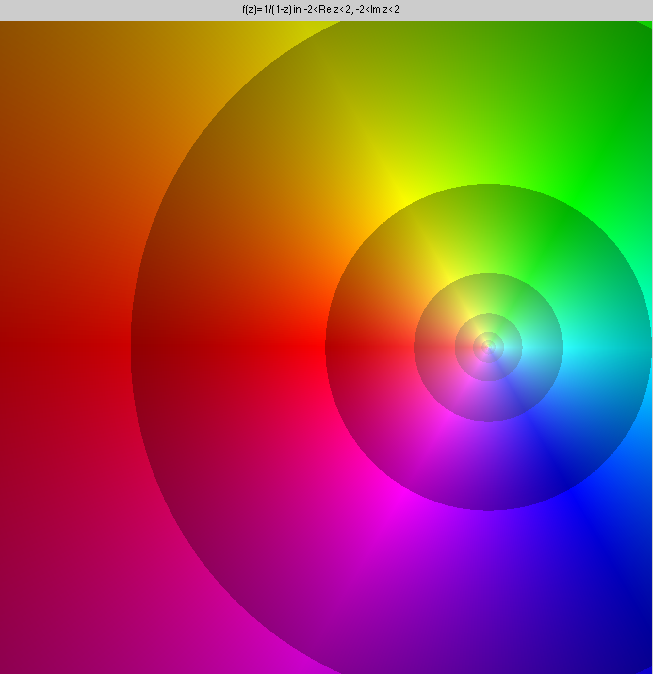
Here is the Taylor polynomial of this function up to order 3: it is
1+z+z2+z3. There are 3 zeros (black), and they are all on the unit circle
(in fact, they are at i, -1, and -i). The unit circle is the circle of convergence.

Here is the Taylor expansion up to order 20:
1+z+...+z20. Notice how the interiour of the circle of
convergence looks like the above plot of 1/(1-z), but the exteriour
looks nothing like it.
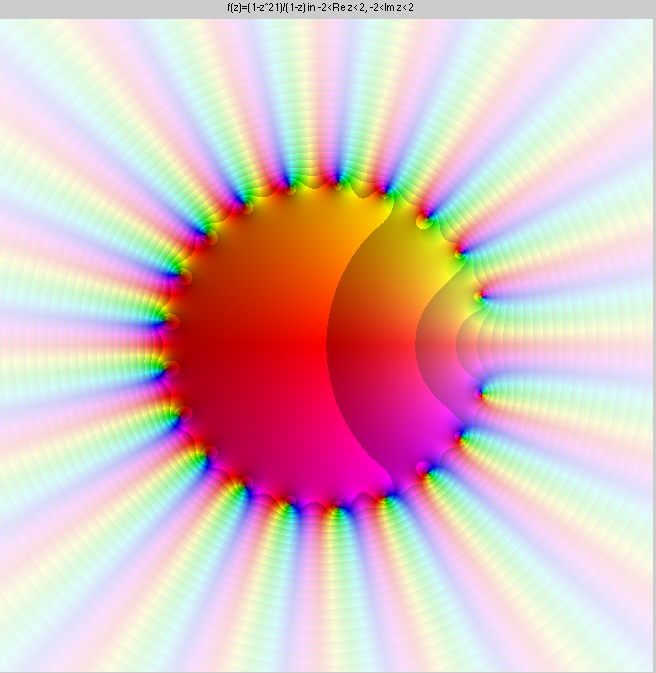
Finally, below are 100 iterations of the Taylor series. This is
1+z+...z100. There are 100 zeroes (black) on the circle of
convergence, but outside, the Taylor polynomial very quickly
approaches ∞ (white). (The Taylor polynomial has a pole of order
100 at ∞.) Inside the circle of convergence, the Taylor series
converges to the given function, outside, it converges to ∞
everywhere. On the circle of convergence it does anything it wants.
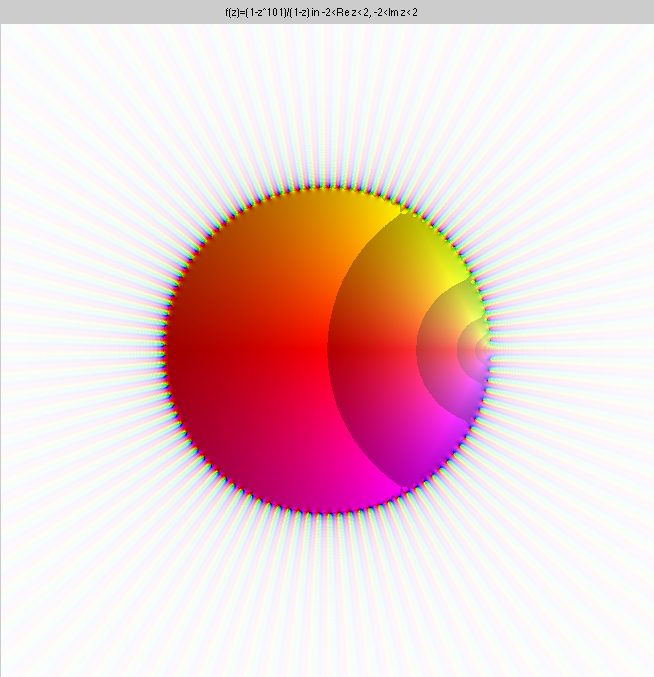
For comparison, here is the function f(z)=e1/z,
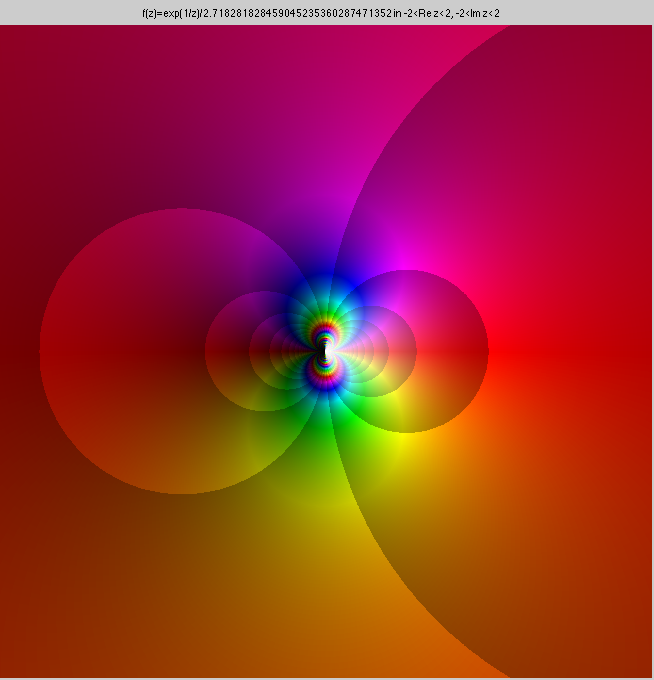
and its
Taylor expansion up to order 20 at z=1. It doesn't look much
different than the first example, even though this function has an
essential singularity, rather than a simple pole on the circle of
convergence. The 20 zeroes of the Taylor
polynomial accumulate near the circle of convergence, although in this
case, they are not exactly on it, they approach it from the outside,
and get closer at every iteration.

Now, let's see some Laurent expansions. Consider the function
f(z)=(z-1)-1(z-2)-1, which has simple poles at
z=1, and z=2.
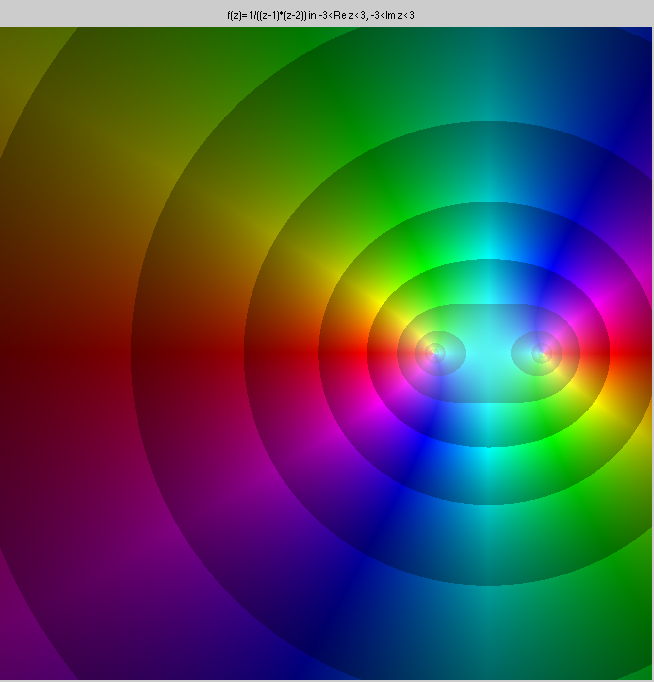
Here are three Laurent expansions centered at the origin, up to order
20, valid in a disk, an
annulus, and the exteriour of a disk, respectively. In each case, the
expansion converges to ∞ in the domains where it is not valid.
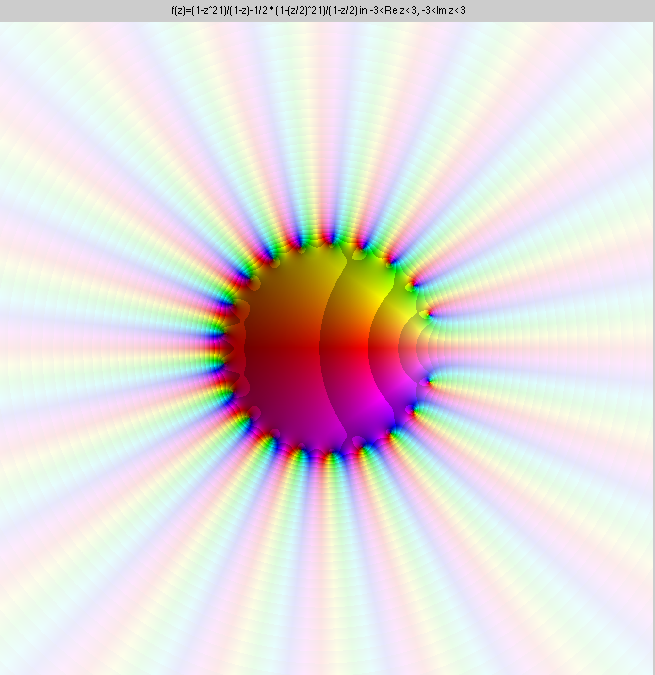

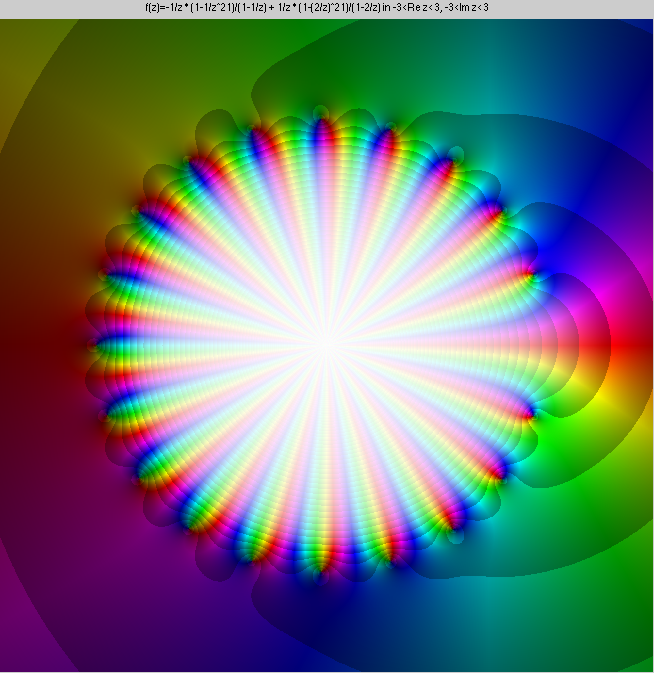
Here is the function f(z)=z-3(1-z)-1, which has a pole of
order 3 at the origin, and its Laurent expansion up to order 20 in the
punctured disk 0<|z|<1, and in the annulus 1<|z|<∞.



Here is the essential singularity e1/z

And here are iterations up to order 3, 5 and 20 of the Laurent
expansion at the origin, where the singularity is. Every one of these
Laurent polynomials has a pole or order n at the origin,
and n zeroes in a circle. This circle of zeroes gets closer
and closer to the pole at the centre.

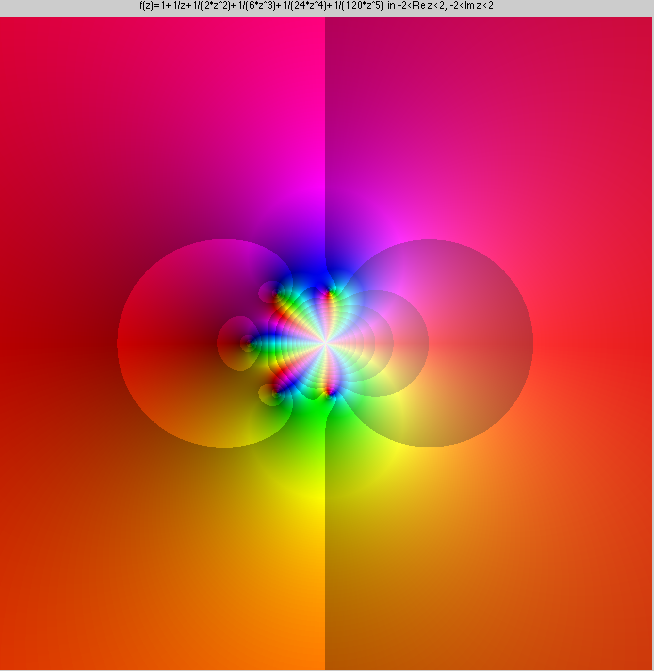
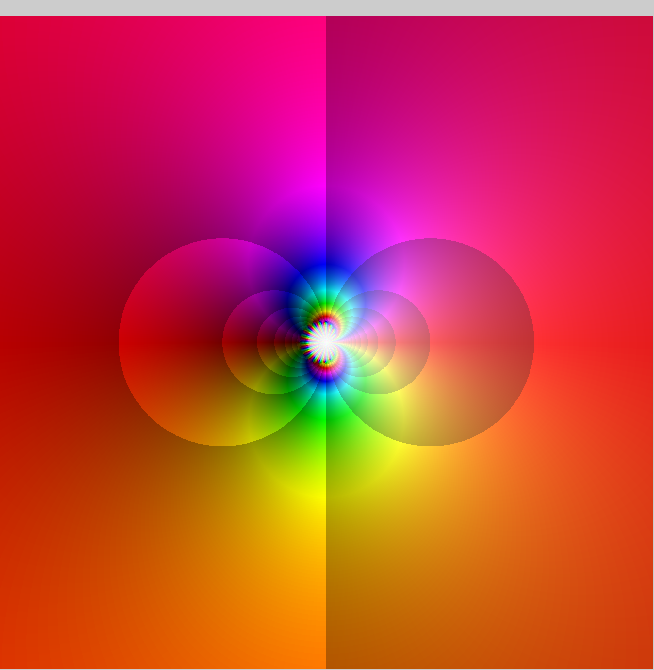
Here is the essential singularity e1/z2. We've
zoomed in a bit, to see better. Remember: white corresponds to
∞, black to 0.

Here are a few more random pictures of essential singularities:
This is e1/z2/z2.
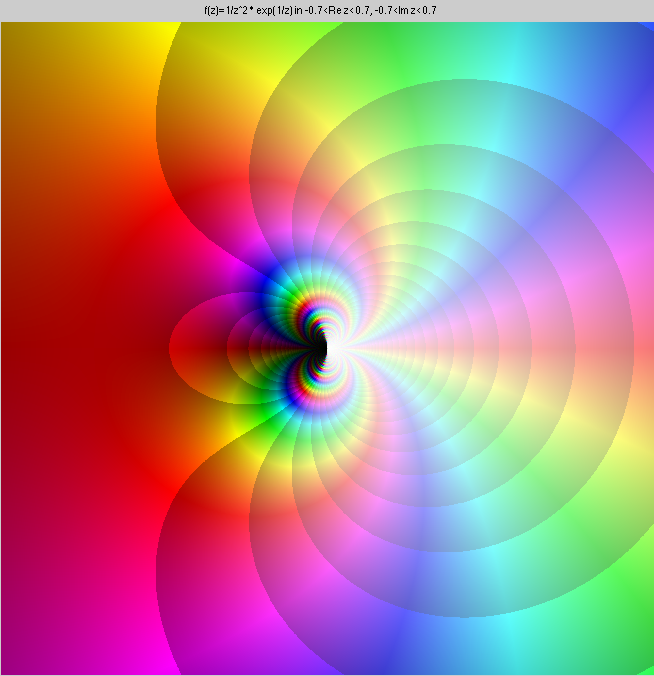
Here are three essential singularities:
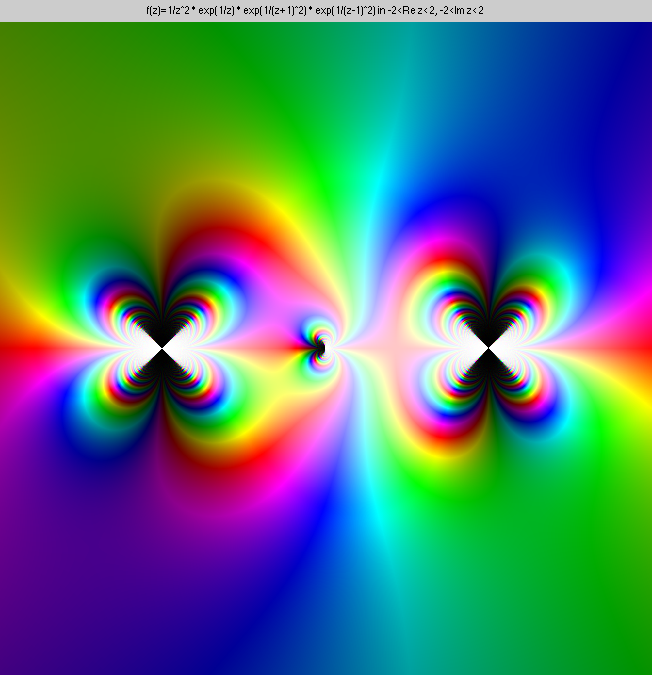
This is ez+e1/z. Note that there are infinitely
many zeroes, and they accumulate at the origin. Still, this function
is analytic everywhere except at the origin, so the singularity is
isolated, and, of course, essential.
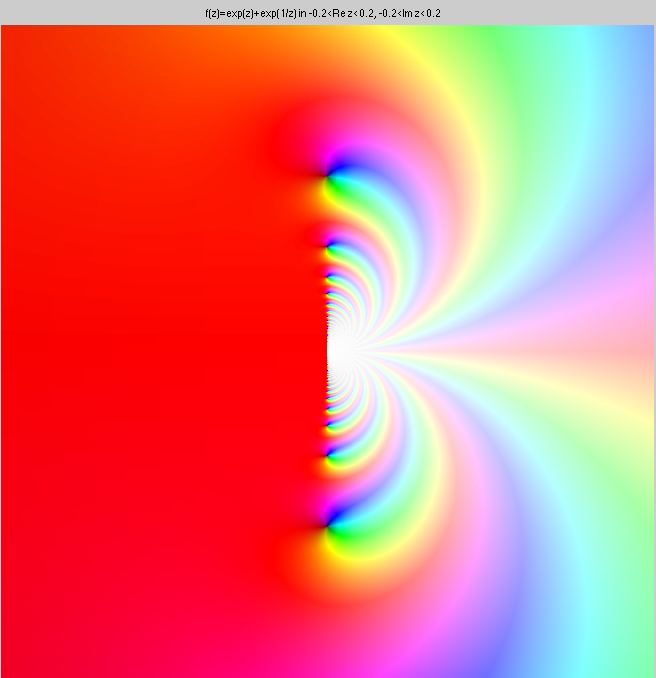
This is ez2+e1/z2 at
two different zoom settings

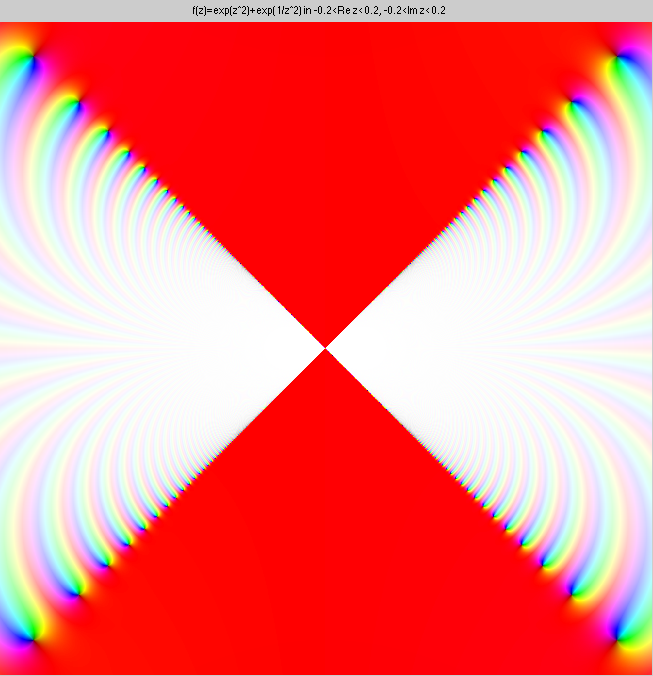
This is sin(1/z), with its isolated and essential singularity.
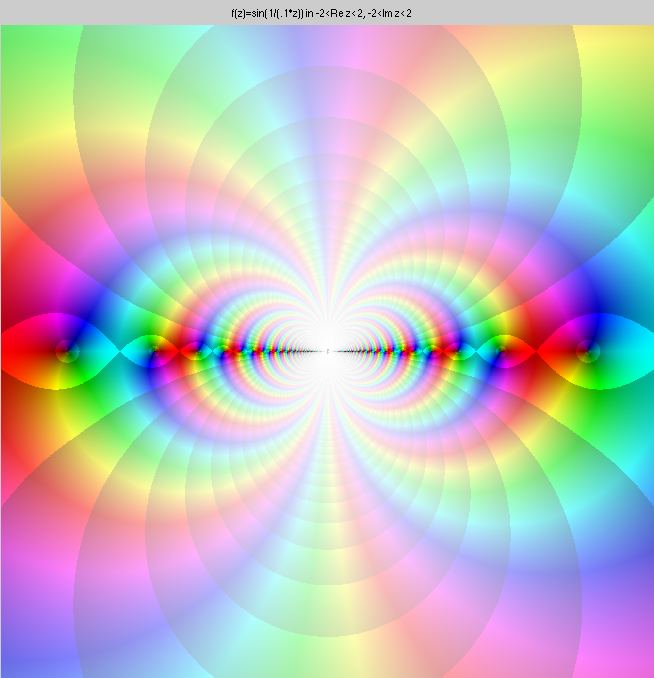
Finally two non-isolated singularities. The first is 1/sin(1/z). This
does not look much different than sin(1/z). But because this time
there are infinitely many poles accumulating at the origin, instead of
infinitely many zeroes, the singularity at the origin is not
isolated.
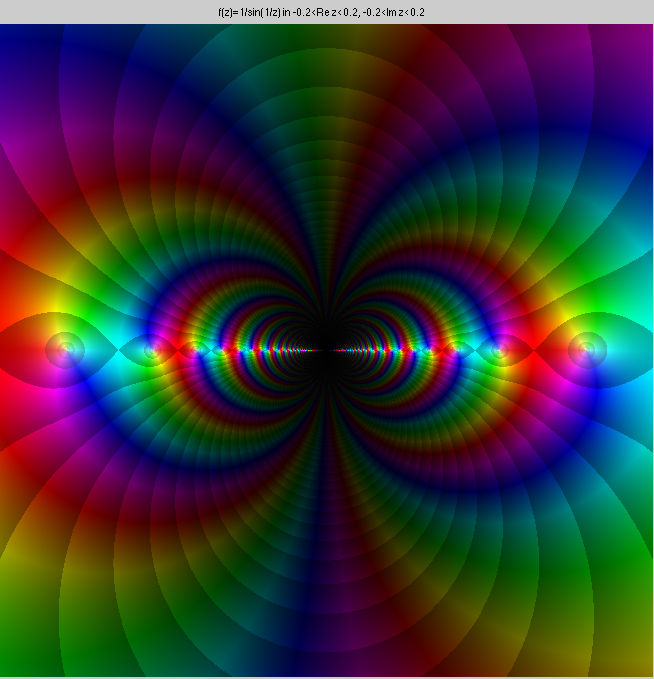
This is tan(1/z2). There are infinitely many poles and
zeroes accumulating at the origin.
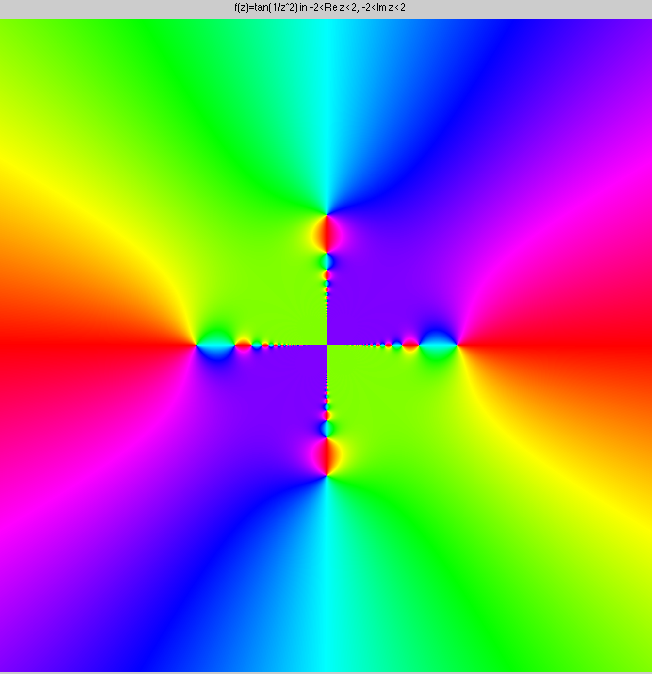
There is no limit to this silliness
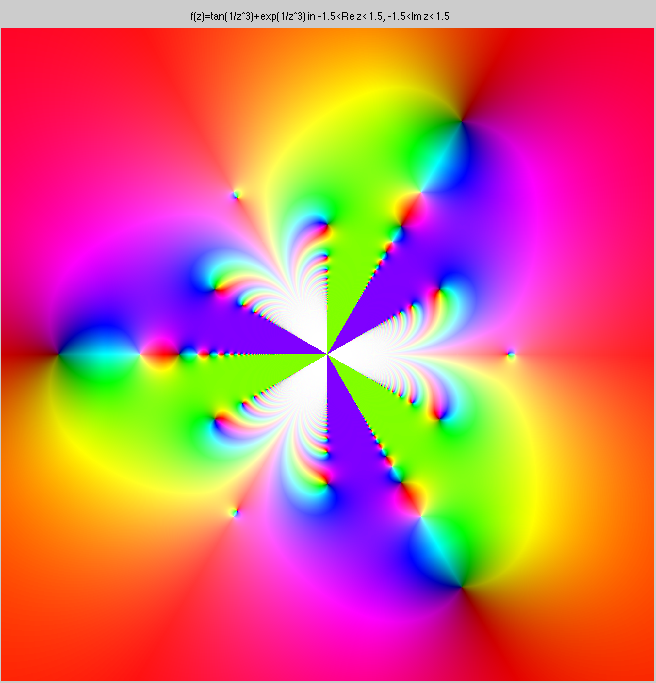

back



























